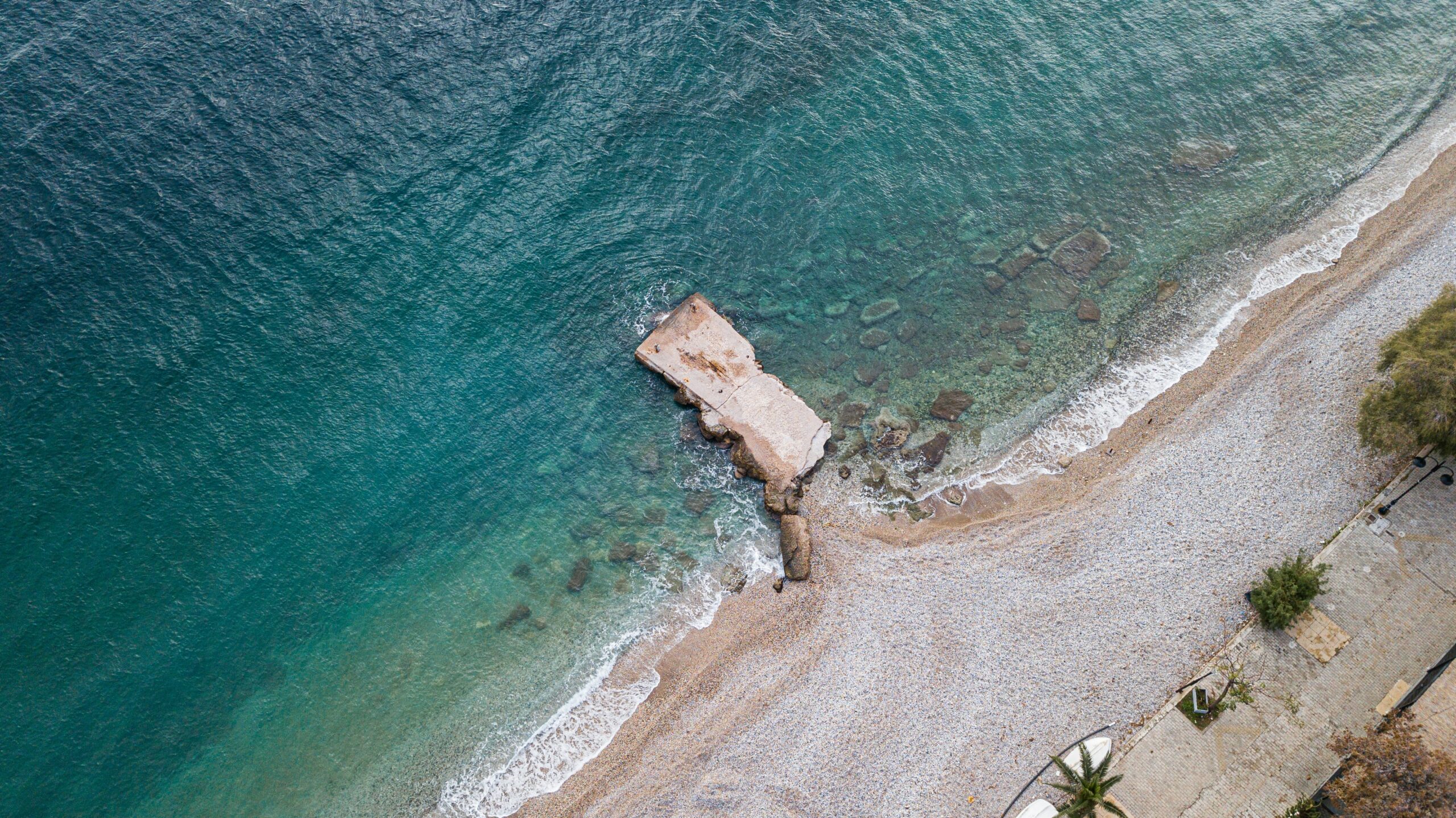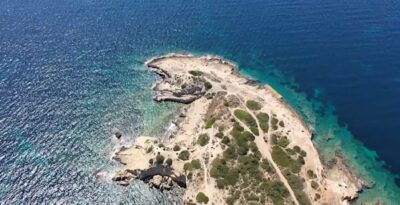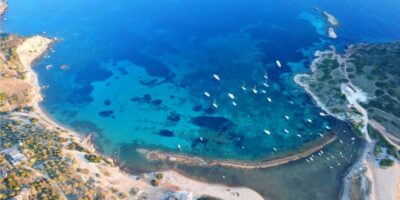Attica has many hidden secrets and all it takes is a willingness to discover them. From beautiful green landscapes, corners with a rich history, and places with mysterious pasts. Somewhere there are places you probably don’t even know exist. Like the unknown in many volcano close to Athens and specifically near the beach of Ag. Theodoron. You may have passed many times through the area of Agioi Theodoroi while you are traveling to the Peloponnese, but you have not made a stop where the volcano is located. We encourage you to visit it! It is worth getting to know this unheard volcano in Attica, close to Athens.
The unknown volcano close to Athens
And yet, Athens has … its own Vesuvius. Just follow the signs that say “Susaki volcano” and not long after, you’ll find yourself in the crater of the Sousaki volcano. The landscape around the volcano is lunar and only high on the crater wall, there is vegetation. Wherever I look, I see volcanic rocks. Ash everywhere. The volcano is asleep, as experts have been saying for a long time. The last volcanic activity in the region was 2,700,000 years ago. As I move towards the heart of the crater, the smell of methane and hydrogen sulphide becomes more and more tense. This volcano in Attica is truly unique.
Agioi Theodoroi and Pefkakia Beach
If you cross the main road of Agioi Theodoroi in the morning, you will notice that the people are out early. they go for shopping at the market. On the parallel to the main road, I fall on to a popular market. take the coastal road of the city. This view is amazing. On the outskirts of the city, a large part of the beach is covered with pine trees. This is Pefkakia of Agioi Theodoroi. It is due to the tree planting of students of the ’50s.
The lighthouse of the area
But the volcano isn’t the only surprise of this trip. If you head to the beach, the coastal route passes between cottages and then moves alongside the oil refinery fencing. In front of you on the seashore, a lighthouse stands up. It is one of the two lighthouses in the area, which guides the ships as they approach the Isthmus of Corinth from the east. It was built by the French Lighthouse Company in 1894. /its flare is 12 nautical miles.
Best place to hang out and get fresh air before you get back. I don’t think you could find a better place!
How are you going to get there?
The route to Agios Theodoros is well known and easy. You follow the National Road Athens – Corinth and at 65 km west of Athens, you are there. The unknown volcano close to Athens. The town is connected by a bus line and also to the suburban train.
Outdoor photography source: George Chrysafoudis



